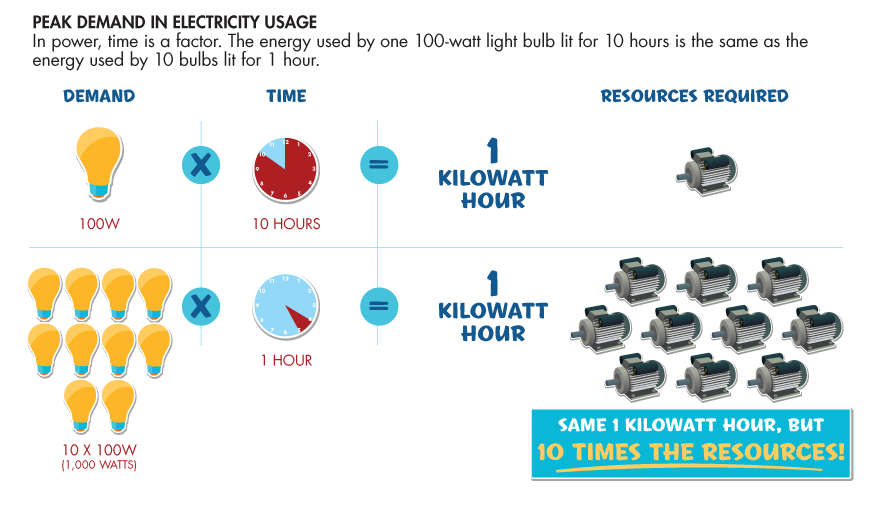Demand is the amount of power needed to supply everything running off of electricity in your home at a specific point in time. This usage, which is expressed in kilowatts (not kilowatt-hours), is called the "demand" on the system. Demand varies from hour to hour, day to day and season to season.
Think about it like your internet service. When one person streams a movie or television show on a device in your home, the stream works perfectly. But as additional people in your home attempt to stream video at the same time, more bandwidth is needed.
Electricity demand is similar. As more appliances in your home run simultaneously, your demands for power increases. For example, ten 100-watt light bulbs demand 1,000-watts (1 kilowatt) of electricity (10x100) to stay lit.
Certain appliances – such as HVAC units, electric ovens and clothes dryers – demand significant power from the grid. That’s why not running them at the same time is important to minimize the Demand Charge.
The graphic below illustrates this concept, and why managing demand has a positive effect on the power grid.

